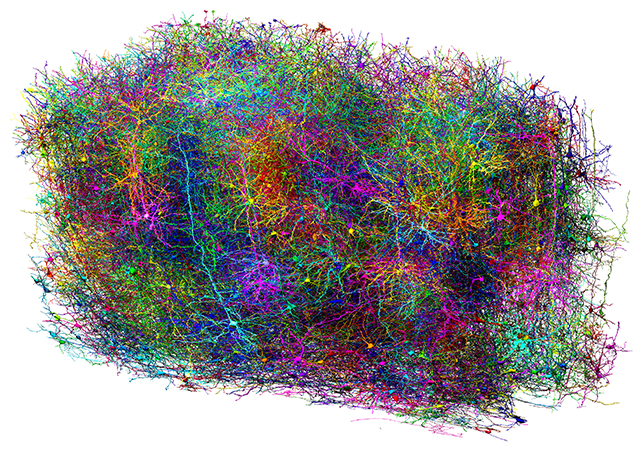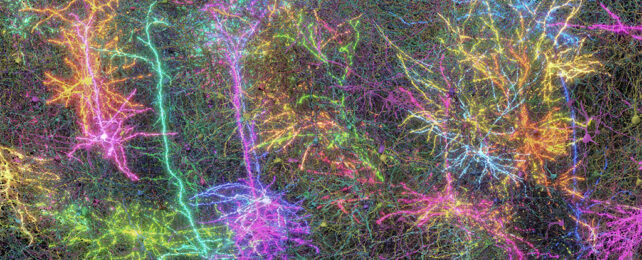Trying to grasp the brain's complexity is a little like trying to comprehend the vastness of space – it feels way beyond our scope of understanding.
By mapping a small part of a mouse brain down to an amazing level of detail, new research could help us grasp the magnitude of the neurological cosmos inside our heads.
Though the volume of brain matter analyzed was barely the size of a grain of sand, the researchers still had to describe the relationships between 84,000 neurons via half a billion synapse connections and 5.4 kilometers (3.4 miles) of neural wiring.
The result is the most detailed rendering of a mammalian brain on record, by some distance.
The incredible work took nine years to complete from start to finish, and involved more than 150 researchers and 22 institutions along the way, including representatives from Princeton University, Baylor College of Medicine in Texas, and the Allen Institute for Brain Science in Seattle.

"The brain is this biological tissue inside our heads that makes us see the world, have feelings, make decisions," says neuroscientist Andreas Tolias, now at Stanford University.
"What is unique about this data is that it brought, in one experiment, both the structure and the function together."
That means scientists were able to see not just the layout of the wiring in the brain, but also the way those wires communicate and work. The mouse used in the study was shown video clips (including some from The Matrix) while moving on a treadmill, with the scientists monitoring brain activity.
The mouse's brain was then dissected into 28,000 separate layers. The team used a combination of AI techniques and human checks to untangle the network of neuronal wires, identify connections, then put the tangle together again.
This wiring diagram of the brain is known as the connectome. Scientists have previously constructed one for an insect brain, but this is whole other level of complexity, bringing us a step closer to doing the same for the human brain.
"The connectome is the beginning of the digital transformation of brain science," says Princeton University neuroscientist H. Sebastian Seung.
The uses for this data, which has been made publicly available, are many and far reaching. The human brain is currently way beyond even the best AI models in terms of how quickly and efficiently it can process information, and research like this gives us a better idea why.
It's also a promising step forward in the study of brain diseases, including dementia. Digitizing some or all of the brain, and understanding exactly how it's put together, means an improved understanding of how it can go wrong.
"The technologies developed by this project will give us our first chance to really identify some kind of abnormal pattern of connectivity that gives rise to a disorder," says Seung.
The research has been published in a series of papers in Nature.
